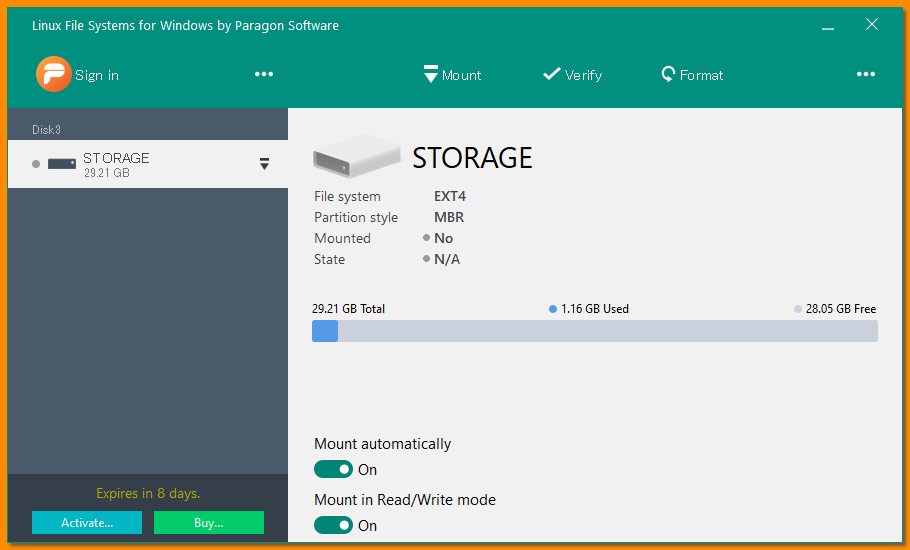
As you may have noticed during the exercise from Chapter 1, this usually happens automatically. Most Linux systems use fdisk at installation time to set the partition type.
#LINUX FILE SYSTEMS FOR WINDOWS WINDOWS#
Systems in mixed environments may contain partitions for other system data, such as a partition with a FAT or VFAT file system for MS Windows data. Most systems contain a root partition, one or more data partitions and one or more swap partitions. Swap partition: expansion of the computer's physical memory, extra memory on hard disk. There are two kinds of major partitions on a Linux system:ĭata partition: normal Linux system data, including the root partition containing all the data to start up and run the system and In those cases, you should use a RAID (Redundant Array of Inexpensive Disks) solution. This does not protect your data against bad blocks and logical errors in the file system. Mind that having a journaled file system only provides data security in case of power failure and sudden disconnection of storage devices. If the user stores the data on a separate partition, then only that (data) partition will be affected, while the system partitions and possible other data partitions keep functioning. If the disk contains only one big partition, the entire system will stop functioning if the disk is full. A simple example: a user creates a script, a program or a web application that starts filling up the disk. This is currently the most important reason for partitioning. The use of partitions remains for security and robustness reasons, so a breach on one part of the system doesn't automatically mean that the whole computer is in danger. This principle dates from the days when Linux didn't have journaled file systems and power failures might have lead to disaster. When an accident occurs, only the data in the partition that got the hit will be damaged, while the data on the other partitions will most likely survive. By dividing the hard disk in partitions, data can be grouped and separated. One of the goals of having different partitions is to achieve higher data security in case of disaster. It may seem strange that Linux uses more than one partition on the same disk, even when using the standard installation procedure, so some explanation is called for. Most people have a vague knowledge of what partitions are, since every operating system has the ability to create or remove them. This table gives an overview of the characters determining the file type: rw-rw-r- 1 jaime jaime 31744 Feb 21 17:56 intro Linux.doc The -l option to ls displays the file type, using the first character of each input line: jaime:~/Documents> ls -l Named pipes: act more or less like sockets and form a way for processes to communicate with each other, without using network socket semantics. (Domain) sockets: a special file type, similar to TCP/IP sockets, providing inter-process networking protected by the file system's access control.

Links: a system to make a file or directory visible in multiple parts of the system's file tree. Most special files are in /dev, we will discuss them later. Special files: the mechanism used for input and output. While it is reasonably safe to suppose that everything you encounter on a Linux system is a file, there are some exceptions.ĭirectories: files that are lists of other files. Most files are just files, called regular files they contain normal data, for example text files, executable files or programs, input for or output from a program and so on. For now we will use this image of the tree, but we will find out later why this is not a fully accurate image. The large branches contain more branches, and the branches at the end contain the tree's leaves or normal files. In order to manage all those files in an orderly fashion, man likes to think of them in an ordered tree-like structure on the hard disk, as we know from MS-DOS (Disk Operating System) for instance. Input and output devices, and generally all devices, are considered to be files, according to the system. Programs, services, texts, images, and so forth, are all files. A Linux system, just like UNIX, makes no difference between a file and a directory, since a directory is just a file containing names of other files. This statement is true because there are special files that are more than just files (named pipes and sockets, for instance), but to keep things simple, saying that everything is a file is an acceptable generalization.

"On a UNIX system, everything is a file if something is not a file, it is a process." A simple description of the UNIX system, also applicable to Linux, is this:


 0 kommentar(er)
0 kommentar(er)
